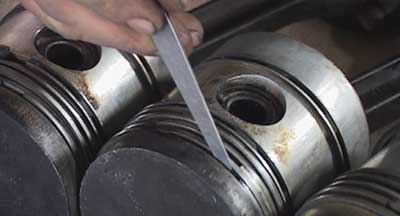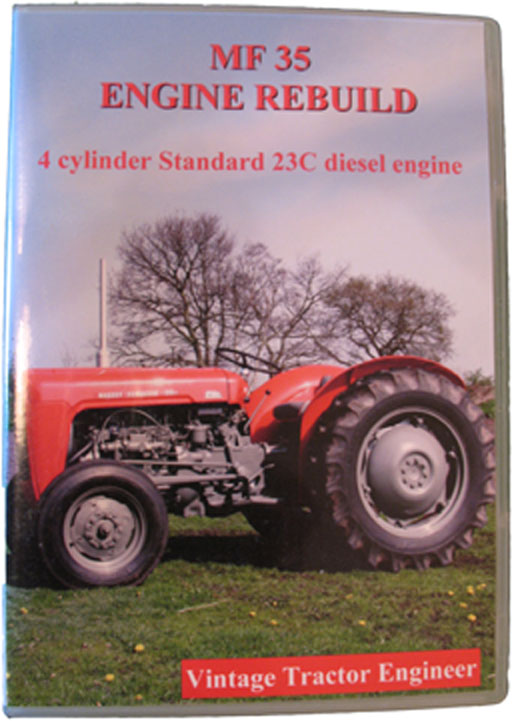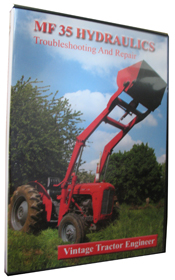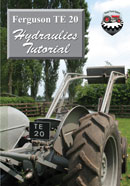Want to check out our tractor maintenance videos? Click here to see what we've got!
Fordson Dexta, Fordson SuperDexta, Ford Dexter
The life of the oil pump can be extended by adhering to the recommended engine oil change frequency. The engine oil and filter should normally be changed every 200 hours and will require 6.8 litres of oil for the sump and about 0.4 litres for a dry oil filter (always fill the filter with oil so that oil flow to the engine is returned as quickly as possible). When replacing the filter be sure to thoroughly clean the filter body and replace the rubber sealing ring before tightening the filter centre-bolt to 10lbs. ft. torque. The by-pass valve should be set between 13 and 17lbs/sq.in.
Inspecting The Oil Pump
The oil pump should create a pressure of 40lb/sq.in at working speed, this can be measured by fitting a pressure guage in place of the oil pressure switch (which lights when the oil pressure drops to below 7-9 psi). If the pressure is low the folowing should be checked….
- Engine oil level
- Blocked sump filter
- Wrong grade of oil
- Oil pump suction or delivery hoses loose
- Incorrect oil pressure relief valve setting or faulty valve
- Excessive main or big end bearing clearances
The pressure relief valve fitted to the pressure side of the pump is set at 60psi. No attempt should be made to adjust this setting. If the tractor is experiencing low oil pressure and all other possible causes have been eliminated then the relief valve ball should be examined to see if it is seating properly.
If the above potential reasons for low oil pressure have been ruled out then the condition of the oil pump should be assessed. Firstly, after removing and cleaning the oil pump, check for any cracks, scoring or scratches. If there are no obvious problems then we can undertake some measurement to assess the pump.
- With the drive rotor and the driven rotor installed in the pump body, use a feeler guage to measure the clearances between the rotors at all points. If the clearance exceeds 0.006in then replace both of the rotors. The rotors must be replaced as a matched pair, do not replace just one of the rotors.
- Check the clearance between the driven (outer) rotor and the pump body. This figure should not exceed 0.010in, otherwise the rotors (both) and the pump body should be replaced.
- Assess end float of rotors. Lay a straight edge over the surface of the pump body to bridge across the top of the rotors and then measure the gap with a feeler guage. A gap exceeding 0.003in indicates the necessity to replace both the pump body and the rotors.






I have a Dexta motor in my boat and it is leaking an excessive amount of oil from thr rear engine seal ( I think)Where would I get new seals etc from in NZ?? ..if taking the motor out to replace this seal should I dismantle it further to check other things?? motor has done 1600 hours total as far as I know!
any comments appreciated. cheers
Geedee